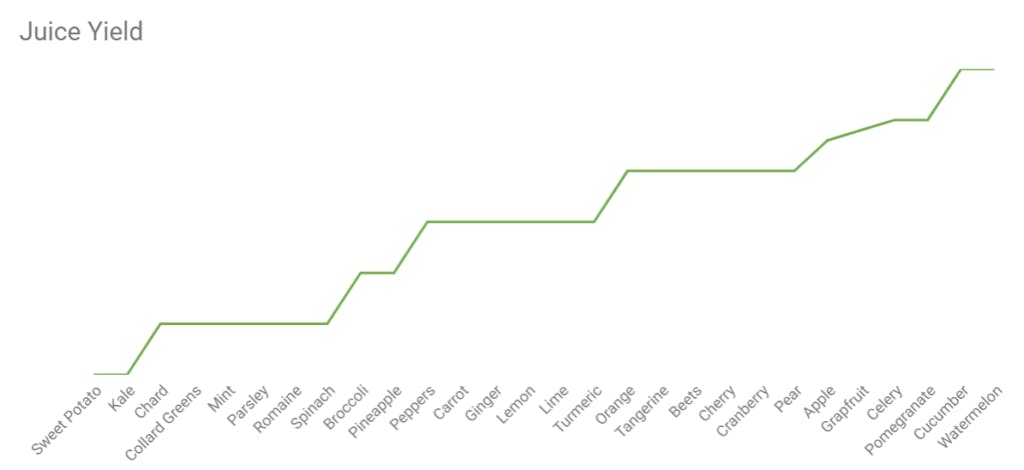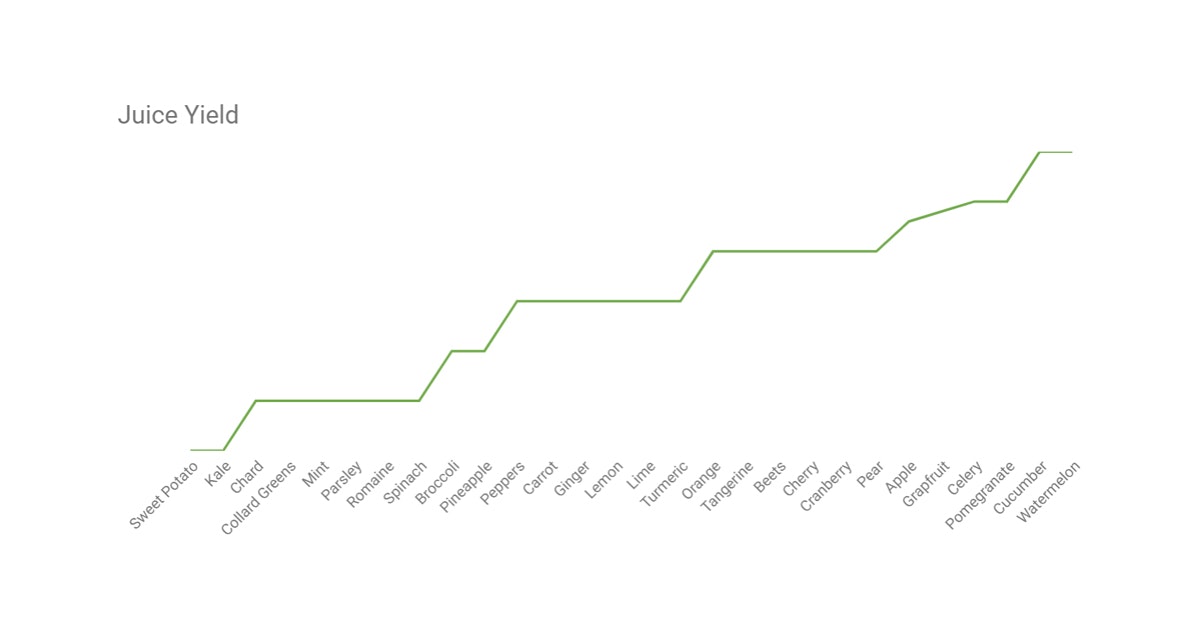When formulating recipes, it’s important to keep in mind that some fruit and vegetable varieties make a lot more juice than others. On the “non-juicy” end of the scale we have sweet potato and leafy greens. On the other end we have watermelon and cucumber. Getting a high yield is not just about using juicy produce. You need to create a good balance of both juicy and non-juicy items.

The chart above shows some commonly pressed produce varieties and where they fall on the Yield scale. Obviously, the chart is missing hundreds of other varieties, but you can use your imagination to predict where that produce would lie on the chart, since it’s probably similar to something else on this chart.
Using This in Practice
If you’re formulating a recipe that’s heavy in leafy greens, you can try to balance it out with something on the juicy end of the chart, like cucumber to give you a nice, consistent output.
It’s also important to try to balance recipes out going the other way: If your recipe is mostly on the juicy end of the chart, add some more fibrous vegetables from the other end. This creates a better “pomace” for pressing. Ideally, when creating recipes using a real two stage juice press like a Goodnature machine, you want to create pomace that can stay firm, but juicy in the press while it’s operating.
Note: This How to Write a Juice Business Plan PDF is a step-by-step guide to helping you write a business plan for your juice business. Download it for free!

A good way to test this is to pick up a handful of pomace and squeeze it in your hand. If juice can flow freely from the pomace, through your fingers, that’s a good sign that it will press well. If the pomace is so mushy that pieces from fruit squeeze through your fingers, you should add something more fibrous to the mix. A recipe that is too mushy may not press well, and could even overflow out of the top of the press.
When using a nicely curated pomace, you will actually extract more juice from each produce variety in the recipe.
How Much Juice Will I Get From My Recipe?
We commonly get questions about how much juice one might get from a specific recipe. The short answer is that it depends on a lot of factors. Those factors are:
- How ripe the produce is. Usually a nice, ripe piece of fruit will yield much more juice than one that’s been picked too early.
- Seasonality. When produce is out of season, it may make more or less juice than when it’s in season.
- How the produce is prepared (peeled, unpeeled, etc.).
- How finely the produce is ground in the pomace. Over-grinding or under-grinding can affect yield.
- How fast and how hard the recipe is pressed in the press. In general, a slower press will give you a higher yield.
- Whether the produce is mixed together or pressed separately. We have seen as much as a 5% increase in total juice output, when combining ingredients instead of juicing separately.
In general, you can expect around 10-12 fluid ounces of juice per pound of prepared produce. If your recipe is mixed with both juicy and non-juicy items, this number will be pretty close. Usually you can weigh out 1.5 lbs. of raw produce and it will make pretty close to 16 ounces of juice, as long as it is a mix of both juicy and non-juicy items.
Learn more about the industry-leading commercial cold press juicers used by juice business owners in over 70 countries.

Comments
i like to work, learn with you who to make juice find the clients and selling in the store please i need your help thanks
anne N
Hi Anne,
One of our team members will email you shortly to see how we can help!


Comment